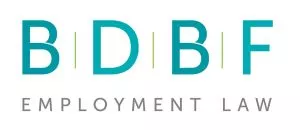Since the COVID-19 pandemic, hybrid working has become the norm for many employees. This has given rise to new obstacles in the workplace, including a rise in the prevalence of cyber bullying. This article considers what bullying is, how that might manifest virtually, legal claims that can arise from cyber bullying and tips for employees on how to respond to cyber bullying.
What is bullying?
There is no legal definition of bullying, but ACAS guidance on bullying at work describes it as unwanted behaviour from a person or group that is either: "Offensive, intimidating, malicious or insulting. An abuse or misuse of power that undermines, humiliates, or causes physical or emotional harm to someone."
It goes further to suggest thatbullying might:
- be a regular pattern of behaviour or a one-off incident;
- happen face-to-face, on social media, in emails or calls;
- happen at work or in other work-related situations; or
- not always be obvious or noticed by others.
It also highlights that it is possible for behaviour to amount to bullying, even where the perpetrator did not realise it or did not intend to bully someone.
The guidance goes on to give a number of examples of bullying at work including:
- constantly criticising someone's work;
- spreading malicious rumours about someone;
- constantly putting someone down in meetings;
- deliberately giving someone a heavier workload than everyone else;
- excluding someone from team social events; or
- putting humiliating, offensive or threatening comments or photos on social media.
How might workplace bullying manifest in the new hybrid world?
The rise of flexible working and interacting with other employees and bosses in a virtual world has created new ways in which employees may be bullied by their colleagues. This can take the form of cutting remarks during video calls, leaving colleagues out of remote meetings or expelling them (in a Jackie Weaver-style), purposely ignoring another employee's messages, emails or calls, sending gossipy messages whilst an employee is speaking or presenting, or purposefully removing employees from workplace WhatsApp chats. These incidents may leave an employee feeling humiliated and isolated, and now that employees often have a better work from home set-up, it may be harder for them to escape from a challenging work environment.
Flexible working has also given rise to a new issue of 'virtual presenteeism', where employees are under pressure to always be 'green' or online on Teams or Slack and feel under increased scrutiny by bosses for not being online. Micromanagement is an issue that is rooted in lack of trust and confidence between an employee and their manager and may be exacerbated by remote working, as bosses cannot physically see that the employee is working. This kind of treatment may also amount to bullying depending on the circumstances.
Cyber bullying and potential claims
Although there is no legal claim of "bullying", if cyber bullying is linked to a protected characteristic or of a sexual nature, employees could bring a claim for harassment.
Under the Equality Act 2010, harassment is defined as unwanted behaviour that must have either violated the person's dignity or created an intimidating, hostile, degrading, humiliating or offensive environment for the person. It is evident that instances of cyber bullying could fall under this definition. In the recent case of Ladd v Lily Head Dental Practice Sales Ltd., the Employment Tribunal determined that preventing an employee on maternity leave from accessing the work group chat amounted to discrimination.
Sexual harassment is unwanted behaviour of a sexual nature. Sexual harassment in a virtual setting can take the form of getting unwarranted requests for video calls at odd hours, making inappropriate comments on an employee's appearance during a Zoom or Teams meeting or inappropriate messaging and communications through company messaging platforms, such as sending suggestive messages. Polling done by the Rights of Women, a sexual harassment advice line, found that almost half of women being subjected to a workplace sexual harassment now say it is taking place remotely.
There is also potential that persistent bullying could give rise to a claim for constructive unfair dismissal, where an employee has no option but to resign because of their employer's actions. For example, in the landmark case of Horkulak v Cantor Fitzgerald International EWHC 1918 (QB), it was held that a CEO's campaign of bullying, harassment and intimidation as a feature of an aggressive management style amounted to such a breach of contract. The judge also refused to accept that frequent use of foul and abusive language in the workplace could remove its power to offend and declined to accept that a different standard of conduct applies to an employer who is paying a substantial salary.
Tips if you think you are being bullied:
If you think you are being cyber bullied:
- keep accurate contemporaneous notes of bullying incidents and any evidence, such as filing emails and screenshotting communications;
- you could ask to record Zoom meetings (although this should not be done covertly as this may breach your employer's policies and result in disciplinary action being taken, so take advice before doing so);
- make use of the "blocking" or "do not disturb" function outside of working hours to stop colleagues contacting you at inappropriate times;
- if you feel that you can, speak to the bully about their behaviour – it may be that they are not aware of how their behaviour is affecting you;
- check if your employer has a policy covering bullying and harassment and whether this refers to online bullying; and
- speak to someone in HR on an informal basis or raise a formal grievance.
The content of this article is intended to provide a general guide to the subject matter. Specialist advice should be sought about your specific circumstances.


